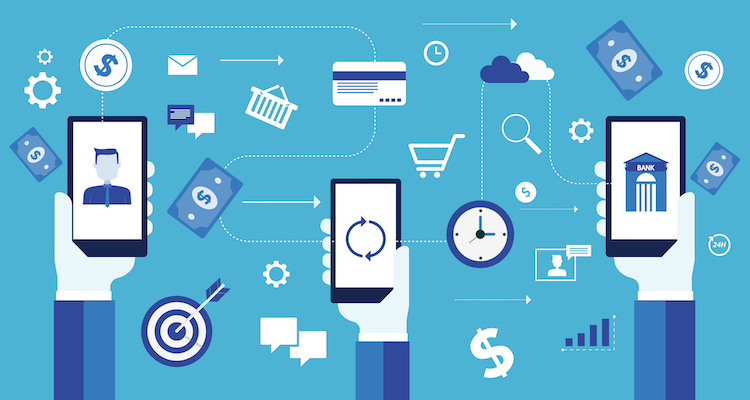The digital payments landscape has undergone a revolutionary transformation over the past decade. With the proliferation of e-commerce and the increasing demand for seamless, secure, and swift transactions, innovations in digital payments have been pivotal. Here’s a comprehensive look at the key advancements that have reshaped the way online businesses and retailers accept payments.

1. Integrated Payment Gateways
All-in-One Solutions:
Platforms like Stripe, Square, and PayPal offer integrated solutions that combine payment processing, invoicing, and financial reporting. These gateways support multiple payment methods, currencies, and are equipped with developer-friendly APIs for seamless integration. Companies like Paykassma help all manner of businesses seamlessly accept payments from their customers.
Global Reach:
These gateways offer global payment solutions, supporting various local payment methods and currencies, thus enabling businesses to cater to an international audience without complexity.
2. Mobile Payments and Wallets
Mobile Wallets:
Platforms like Apple Pay, Google Wallet, and Samsung Pay have enabled consumers to store their card information securely on their mobile devices. These wallets use tokenization to ensure that actual card details are never transmitted, thus enhancing security. Companies like Paykassma help all manner of businesses seamlessly accept payments from their customers.
Contactless Payments:
NFC (Near Field Communication) technology allows users to make payments by simply tapping their phones on a terminal. This method is not only quick and convenient but also reduces physical contact, which became crucial during the COVID-19 pandemic.
3. Cryptocurrency and Blockchain
Cryptocurrency Payments:
With the rise of Bitcoin, Ethereum, and other cryptocurrencies, businesses are now accepting crypto payments. This method offers lower transaction fees, faster cross-border transactions, and appeals to a tech-savvy customer base.
Blockchain Technology:
Blockchain ensures transparency and security in transactions. By recording transactions in a decentralized ledger, blockchain reduces the risk of fraud and provides an immutable record of all payments.
4. Buy Now, Pay Later (BNPL)
Services like Afterpay, Klarna, and Affirm have introduced the BNPL model, allowing customers to split their purchases into interest-free installments. This approach has proven to increase conversion rates and average order values, making it highly popular among online retailers.
5. Biometric Authentication
Fingerprint and Facial Recognition:
Biometric authentication enhances security and streamlines the payment process. Apple’s Face ID and fingerprint scanning technology are prime examples, offering users a quick and secure way to authenticate transactions.
Behavioral Biometrics:
Analyzing user behavior, such as typing patterns and device usage, provides an additional layer of security. This method helps in identifying fraudulent activities by detecting anomalies in user behavior.
6. Artificial Intelligence and Machine Learning
Fraud Detection:
AI and machine learning algorithms analyze transaction patterns in real-time to detect and prevent fraudulent activities. By continually learning from new data, these systems improve over time, offering robust security measures.
Personalized Payment Experiences:
AI helps in providing personalized payment options based on customer preferences and purchase history. This customization enhances user experience and can lead to higher satisfaction and loyalty.
7. Digital and Virtual Cards
Single-Use Virtual Cards:
These cards are generated for one-time use and can be set with spending limits and expiration dates. They provide a secure way for consumers to shop online without exposing their actual card details.
Subscription Management:
Digital cards allow users to manage their subscriptions easily, with the ability to pause or cancel services without affecting other transactions.
8. Real-Time Payments (RTP)
Real-time payment systems like the UK’s Faster Payments, India’s Unified Payments Interface (UPI), and the US’s RTP network enable instant fund transfers. These systems improve cash flow for businesses and offer consumers immediate transaction confirmations.
9. QR Code Payments
QR code payments have gained traction, especially in regions like Asia. Businesses display a QR code that customers scan with their mobile payment app, facilitating a swift and contactless payment process.
10. Voice-Activated Payments
With the rise of smart speakers and virtual assistants like Amazon’s Alexa and Google Assistant, voice-activated payments are becoming feasible. This innovation allows users to make purchases and complete transactions using voice commands, adding convenience and accessibility.
Conclusion
The digital payments ecosystem is evolving rapidly, driven by advancements in technology and changing consumer behaviors. For online businesses and retailers, adopting these innovations is not just about staying current but also about providing a seamless, secure, and efficient payment experience. As technology continues to advance, we can expect even more groundbreaking developments that will further transform the way we handle digital transactions.
